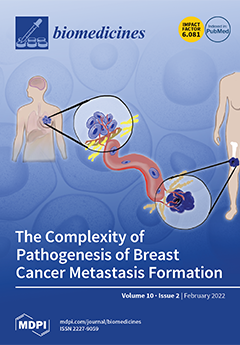Background: Vascular inflammation plays a crucial role in peripheral arterial disease (PAD), although the role of the mediators involved has not yet been properly defined. The aim of this work is to investigate gene expression and plasma biomarkers in chronic limb-threating ischemia (CLTI).
Methods: Using patients from the GHAS trial, both blood and ischemic muscle samples were obtained to analyze plasma markers and mRNA expression, respectively. Statistical analysis was performed by using univariate (Spearman, t-Student, and X
2) and multivariate (multiple logistic regression) tests.
Results: A total of 35 patients were available at baseline (29 for mRNA expression). Baseline characteristics (mean): Age: 71.4 ± 12.4 years (79.4% male); TNF-α: 10.7 ± 4.9 pg/mL; hsCRP:1.6 ± 2.2 mg/dL; and neutrophil-to-lymphocyte ratio (NLR): 3.5 ± 2.8. Plasma TNF-α was found elevated (≥8.1) in 68.6% of patients, while high hsCRP (≥0.5) was found in 60.5%. Diabetic patients with a high level of inflammation showed significantly higher levels of NOX4 expression at baseline (
p = 0.0346). Plasma TNF-α had a negative correlation with
NOS3 (
eNOS) expression (−0.5,
p = 0.015) and plasma hsCRP with
VEGFA (−0.63,
p = 0.005). The expression of
NOX4 was parallel to that of plasma TNF-α (0.305,
p = 0.037), especially in DM. Cumulative mortality at 12 months was related to NLR ≥ 3 (
p = 0.019) and TNF-α ≥ 8.1 (
p = 0.048). The best cutoff point for NLR to predict mortality was 3.4.
Conclusions: NOX4 and TNF-α are crucial for the development and complications of lower limb ischemia, especially in DM. hsCRP could have a negative influence on angiogenesis too. NLR and TNF-α represent suitable markers of mortality in CLTI. These results are novel because they connect muscle gene expression and plasma information in patients with advanced PAD, deepening the search for new and accurate targets for this condition.
Full article






